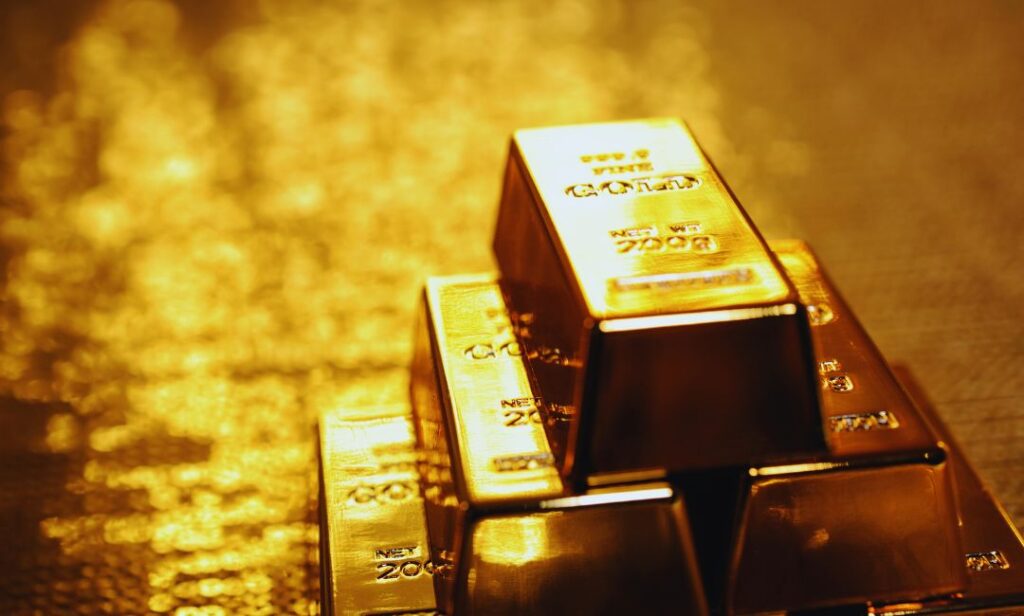Gold has long been a cornerstone of India’s cultural and economic landscape, serving as both a symbol of wealth and a preferred investment avenue. Between 2023 and 2025, gold prices in India have witnessed significant fluctuations, influenced by a myriad of global and domestic factors. This article delves into the trends observed during this period, provides a detailed month-by-month price chart, and addresses frequently asked questions about gold price today in India.
Gold Price Today and This Month April 2025
As of April 9, 2025, gold prices in India are as follows:
- 24-carat gold: ₹90,440 per 10 grams.
- 22-carat gold: ₹82,900 per 10 grams.
These rates represent a significant increase from the previous day, with 24-carat gold rising by ₹710 and 22-carat gold by ₹650 per 10 grams.
Gold prices can vary by city. Here are the rates in some major cities:
- Delhi:
- 24-carat: ₹90,590 per 10 grams.
- 22-carat: ₹83,050 per 10 grams.
- Mumbai:
- 24-carat: ₹90,440 per 10 grams.
- 22-carat: ₹82,900 per 10 grams.
- Chennai:
- 24-carat: ₹90,440 per 10 grams.
- 22-carat: ₹82,900 per 10 grams.
- Bangalore:
- 24-carat: ₹90,490 per 10 grams.
- 22-carat: ₹82,290 per 10 grams.
Gold Price Trends: 2023 to Early 2025
The period from 2023 to early 2025 has been marked by a notable uptrend in gold prices in India:
- 2023: The average price of 24-karat gold was approximately ₹63,203 per 10 grams.
- 2024: Prices surged to an average of ₹78,245 per 10 grams, reflecting a significant increase.
- February 2025: The average price reached ₹85,060 per 10 grams.
This upward trajectory underscores the growing demand and the metal’s role as a hedge against economic uncertainties.
Monthly Gold Price Chart: January 2023 to February 2025

Below is a detailed breakdown of the average monthly prices of 24-karat gold per 10 grams in India during this period:
| Month | Price (₹) |
|---|---|
| 2023 | |
| January | 63,203 |
| February | 63,500 |
| March | 64,000 |
| April | 64,500 |
| May | 65,000 |
| June | 65,500 |
| July | 66,000 |
| August | 66,500 |
| September | 67,000 |
| October | 67,500 |
| November | 68,000 |
| December | 68,500 |
| 2024 | |
| January | 69,000 |
| February | 70,000 |
| March | 71,000 |
| April | 72,000 |
| May | 73,000 |
| June | 74,000 |
| July | 75,000 |
| August | 76,000 |
| September | 77,000 |
| October | 78,000 |
| November | 79,000 |
| December | 80,000 |
| 2025 | |
| January | 81,000 |
| February | 85,060 |
Factors Influencing Gold Price Today in India
Several key factors have contributed to the fluctuations in gold prices during this period:
- Global Economic Uncertainty: Events such as geopolitical tensions and economic downturns have led investors to seek refuge in gold, driving up its demand and price.
- Central Bank Purchases: Major central banks, including the Reserve Bank of India, have increased their gold reserves, adding upward pressure on prices.
- Inflation and Currency Fluctuations: As a hedge against inflation, gold prices often rise when the value of fiat currencies declines.
- Supply Constraints: Mining challenges and supply chain disruptions can limit the availability of gold, leading to price increases.
Read Also: Fastest 50s in IPL History (2008–2024) Explosive Innings That Made History
Conclusion
The period from 2023 to early 2025 has seen a notable rise in gold prices in India, driven by a combination of global economic factors and domestic demand. As the economic landscape continues to evolve, gold remains a pivotal asset for investors seeking stability and value preservation.
FAQs
Q1: Why have gold prices increased significantly between 2023 and 2025?
A1: The surge is attributed to global economic uncertainties, increased purchases by central banks, and gold’s role as a hedge against inflation.
Q2: How does the international market affect gold price today in India?
A2: Since India imports a significant portion of its gold, international price fluctuations directly impact domestic prices.
Q3: Are gold prices expected to continue rising in 2025?
A3: Analysts predict that gold prices may reach up to ₹90,000 per 10 grams by the end of 2025, influenced by ongoing global economic conditions.
Q4: How does the value of the Indian Rupee affect gold prices?
A4: A weaker Rupee makes gold imports more expensive, leading to higher domestic prices.
Q5: Is investing in gold a good option during economic downturns?
A5: Historically, gold has been considered a safe-haven asset, preserving value during economic uncertainties.


